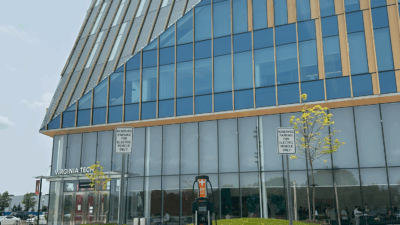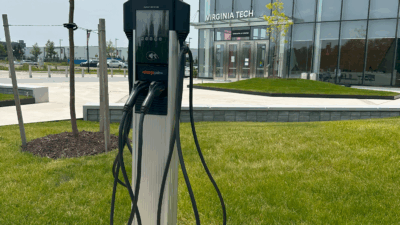As municipalities look to electrify fleets, grid and funding concerns can make the process much more difficult.

The following example is a conglomerate of recent design projects created to convey a trend:
A municipality is looking to electrify its fleet of city-owned vehicles. To fuel their EVs, the municipality needs several Level 2 and potentially some Level 3 chargers. They own a capped landfill that cannot be built on. The landfill is an opportune option for a ballast-mounted solar system project that does not require ground penetration into a hazardous environment. The energy harnessed from this “solar landfill” is most useful at night when the municipality’s employees plug in their company vehicles before going home. That is where the BESS comes in, saving the energy produced by the solar landfill (charging the batteries) during the day to be used at night for charging (discharging the batteries). Additionally, a BESS would be required to provide a stable power source for Level 3 fast charging if the system is not connected to the power grid. Fast charging an EV can put a lot of stress on a grid—using just solar, without a BESS or utility power, would be unstable.
If charging stations are to be more meaningfully integrated into our infrastructure, the federal government likely needs to play a part. The Bipartisan Infrastructure Law (BIL) of 2021 introduced new funding to expand EV charging infrastructure. Major U.S. Department of Transportation (USDOT) initiatives under this law include the $5 billion “National Electric Vehicle Infrastructure Formula Program” and the “Discretionary Grant Program for Charging and Fueling Infrastructure.” The law permits EV charging infrastructure as an eligible expense under the USDOT Surface Transportation Block Grant formula program. BIL allocates funding to the USDOT, the Department of Energy and the Environmental Protection Agency for projects such as deploying electric school buses and ferries, electrifying ports, supporting domestic battery production and promoting battery recycling, along with other EV-focused efforts. However, as of February 2025, the funding has been suspended by the federal government.



